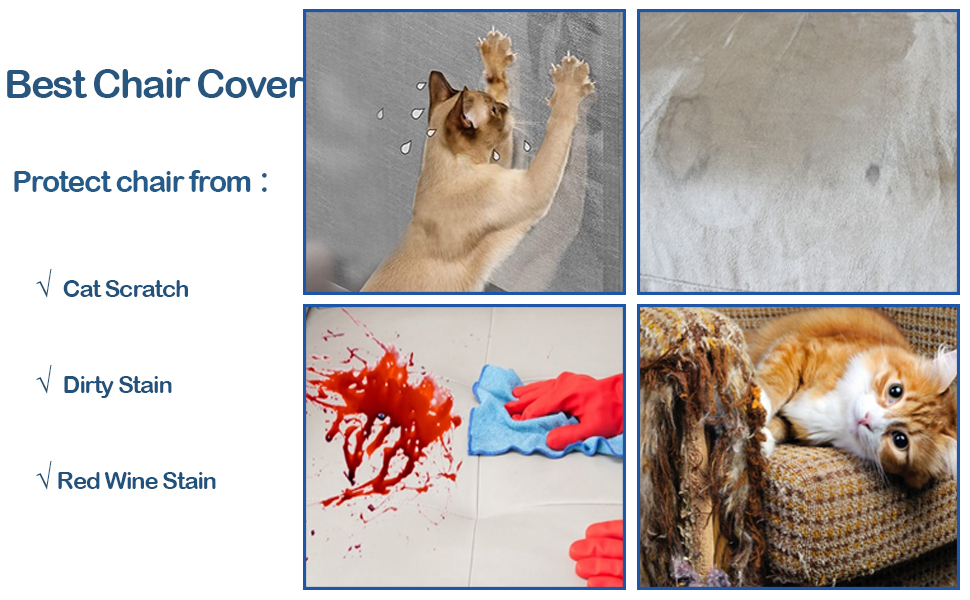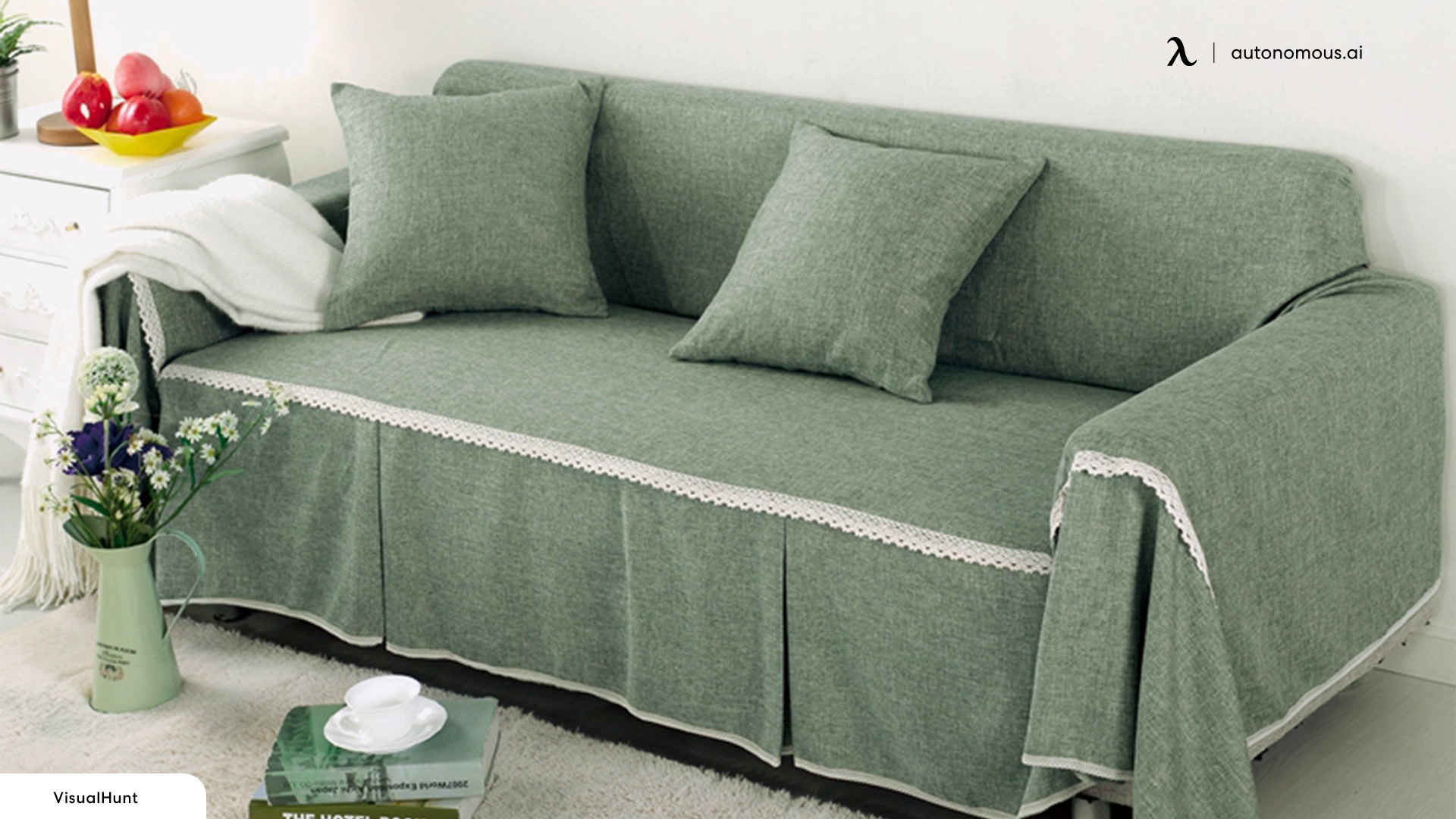The Problem of Cat Scratching on Chairs

Cats scratching furniture, particularly chairs, is a common issue that can cause significant damage and frustration for pet owners. While scratching is a natural feline behavior, it can be challenging to manage and prevent, especially when it comes to beloved furniture pieces. Understanding the reasons behind this behavior is crucial for finding effective solutions.
Reasons for Cat Scratching
Cats scratch furniture for several reasons, including:
- Marking Territory: Cats have scent glands in their paws, and scratching leaves behind their unique scent, marking their territory and providing a sense of security.
- Shedding Outer Layer of Claws: Cats need to shed the outer layer of their claws to maintain sharpness and keep them healthy. Scratching helps them achieve this.
- Stretching and Exercise: Scratching provides a form of exercise and helps cats stretch their muscles and tendons.
- Stress Relief: Scratching can be a way for cats to relieve stress and anxiety, similar to how humans might fidget or chew on their nails.
Potential Damage Caused by Cat Scratching
Cat scratching can cause various types of damage to chairs, depending on the material:
- Fabric: Fabric chairs are particularly susceptible to cat scratching, leading to tears, holes, and frayed edges.
- Leather: Leather chairs can also be damaged by scratching, resulting in scratches, gouges, and even tearing.
- Wood: Wood chairs can be scratched, leaving behind unsightly marks and weakening the structure over time.
Types of Chair Materials Susceptible to Cat Scratching
Here are some examples of different chair materials that are particularly prone to cat scratching:
- Velvet: The soft, plush texture of velvet can be irresistible to cats, making it easily susceptible to scratching and tearing.
- Microfiber: While microfiber is a durable fabric, it can still be scratched by cats, especially if they are particularly enthusiastic scratchers.
- Upholstery Fabric: Many upholstery fabrics, such as cotton, linen, and silk, are relatively fragile and can be easily damaged by cat scratching.
- Leatherette: Leatherette, a synthetic leather substitute, can also be scratched by cats, although it is typically more resistant than genuine leather.
Chair Covers as a Solution: Chair Covers Prevent Cat Scratching

Chair covers offer a practical and often cost-effective solution to the problem of cat scratching on chairs. They act as a protective barrier, shielding your furniture from your feline friend’s sharp claws.
Types of Chair Covers
Chair covers come in a variety of materials and styles to suit different preferences and needs. Here’s a breakdown of the most common types:
- Fabric Covers: These are the most widely available and come in various textures, patterns, and colors. They are typically made from cotton, polyester, or blends of both. Fabric covers are often machine washable, making them easy to clean.
- Leather Covers: These offer a luxurious look and feel, and are known for their durability. Leather covers can withstand scratches better than fabric, but they may be more expensive and require special care.
- Vinyl Covers: Vinyl covers are waterproof and easy to clean. They are often chosen for their practicality and affordability, although they may not offer the same aesthetic appeal as fabric or leather covers.
Material Effectiveness
The effectiveness of different materials in preventing cat scratching varies.
- Fabric Covers: While some fabrics can withstand scratching better than others, fabric covers are generally not as effective as leather or vinyl. Cats with persistent scratching habits may still be able to damage fabric covers over time.
- Leather Covers: Genuine leather is known for its durability and resistance to scratching. However, cheaper leather alternatives may not be as effective. Leather covers can also be susceptible to punctures from sharp claws.
- Vinyl Covers: Vinyl is a strong and durable material that can effectively resist cat scratching. It is also waterproof and easy to clean, making it a practical choice for families with pets.
Advantages and Disadvantages
Chair covers offer several advantages in protecting furniture from cat scratching.
- Protection: Chair covers provide a barrier between your furniture and your cat’s claws, preventing damage and extending the lifespan of your chairs.
- Affordability: Compared to replacing scratched furniture, chair covers are a relatively inexpensive solution.
- Variety: A wide variety of styles, colors, and materials are available, allowing you to choose covers that match your décor.
- Easy to Clean: Many chair covers are machine washable, making it easy to keep them clean and fresh.
However, there are also some disadvantages to consider:
- Appearance: Some people find chair covers to be aesthetically unappealing, especially if they don’t match the furniture perfectly.
- Fit: Finding chair covers that fit snugly and stay in place can be challenging, especially for chairs with unusual shapes or sizes.
- Durability: While some chair covers are durable, others may tear or wear out quickly, especially if your cat is a persistent scratcher.
Choosing the Right Chair Covers

Chair covers prevent cat scratching – With so many chair cover options available, choosing the right ones for your needs can feel overwhelming. However, considering a few key factors can help you narrow down your choices and find the perfect covers to protect your furniture and deter your feline friend from scratching.
Chair Style and Fit
The style of your chairs plays a significant role in determining the type of cover that will work best.
- For traditional armchairs or dining chairs with straight backs, simple slip-on covers are usually a good choice. They’re easy to put on and take off, making them convenient for washing.
- If you have chairs with more intricate designs, such as curved backs or elaborate carvings, you might need tailored covers that are specifically designed to fit your chairs. These covers offer a more snug fit and a polished look.
- For chairs with loose cushions, consider covers that are designed to accommodate the cushions separately. This ensures a secure fit and prevents the covers from slipping off.
It’s essential to measure your chairs accurately before purchasing covers. Use a measuring tape to determine the height, width, and depth of each chair, including the seat and back. Make sure to account for any armrests or other features.
To ensure a proper fit, consider ordering covers that are slightly larger than your chair measurements. This allows for a more generous fit and makes it easier to put the covers on and off.
Cat Behavior and Material, Chair covers prevent cat scratching
The material of the chair cover is crucial in deterring scratching.
- Consider materials like microfiber, velvet, or chenille, which are soft and comfortable for humans but can be less appealing to cats. These fabrics often have a smooth texture that cats find less enticing to scratch.
- Avoid materials like leather or suede, which cats often find irresistible to scratch. These materials can easily be damaged by cat claws.
- Look for covers made from durable and tear-resistant fabrics. This ensures that the covers can withstand the wear and tear of your cat’s claws and remain in good condition for longer.
It’s also helpful to understand your cat’s scratching behavior. If your cat is a casual scratcher, a simple slip-on cover might suffice. However, if your cat is a persistent scratcher, you might need a more durable cover with reinforced seams or a scratch-resistant layer.
Budget and Aesthetics
Chair covers come in a wide range of prices, depending on the material, style, and brand.
- Basic slip-on covers are generally the most affordable option, while tailored covers and those made from premium fabrics can be more expensive.
- Consider your budget and prioritize features that are important to you. For example, if you’re on a tight budget, you might opt for a basic slip-on cover made from a durable fabric. If you’re looking for a more luxurious option, you might choose a tailored cover made from velvet or chenille.
Don’t forget to consider the color and pattern of the chair covers to match your existing décor. Choose covers that complement your furniture and overall aesthetic. You can find chair covers in a variety of colors, patterns, and textures to suit your style and preferences.
Chair covers are a lifesaver when it comes to protecting your furniture from those pesky cat claws. They’re not just for special occasions, though! If you’re considering a more elegant look for your event, you might want to explore the chiavari chairs vs chair covers debate.
But regardless of your choice, a good set of chair covers can help keep your chairs looking their best, even if your furry friend decides to have a scratching session.
My cat, Whiskers, has a thing for scratching furniture, so I’m always on the lookout for ways to protect my chairs. While I love the look of my leather dining chairs, they’re not exactly cat-proof. I recently discovered square top spandex chair covers and they’ve been a lifesaver! They’re stretchy, easy to clean, and they’ve kept Whiskers from turning my chairs into his personal scratching post.
Plus, they add a touch of elegance to my dining room, so it’s a win-win!